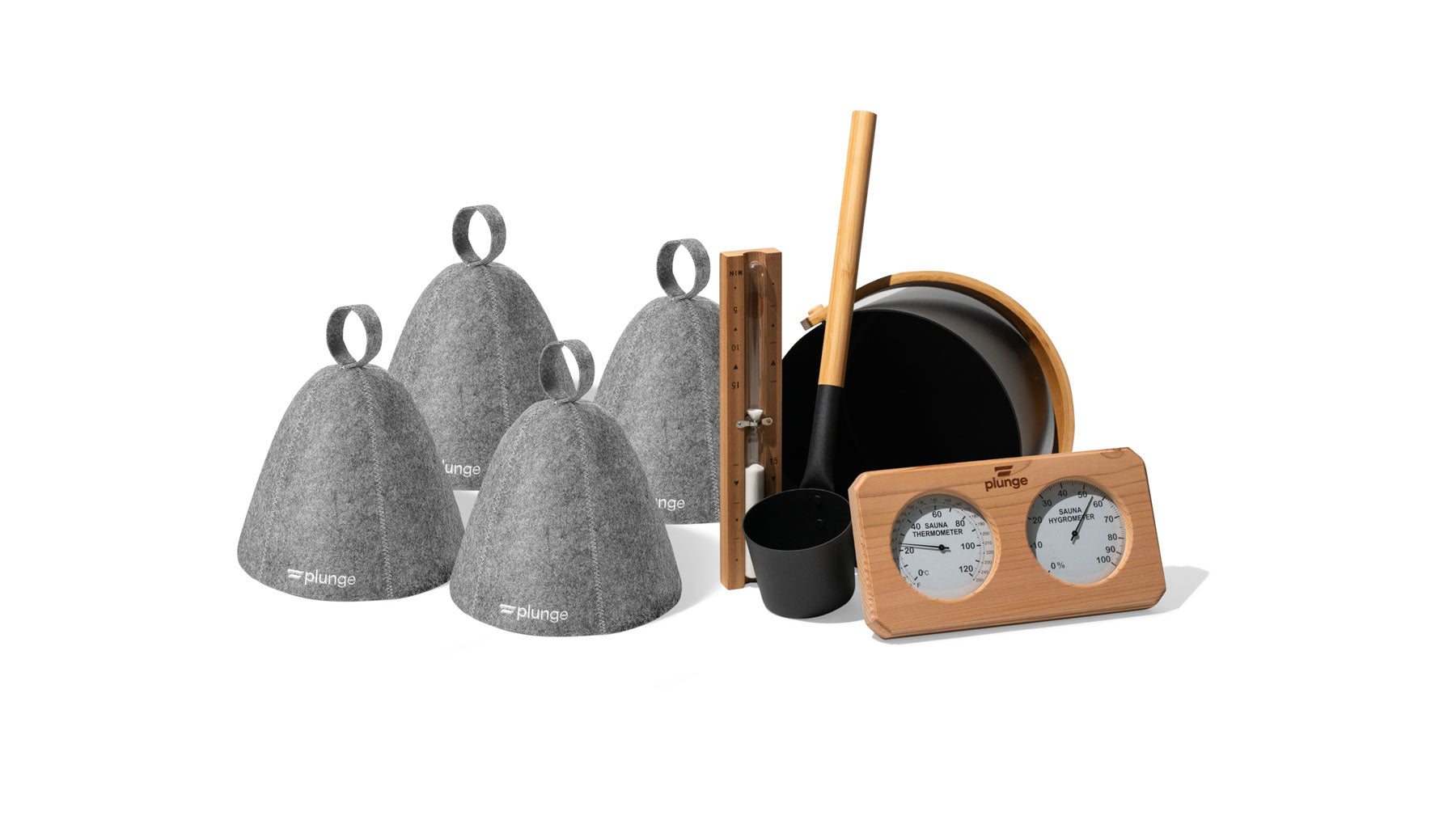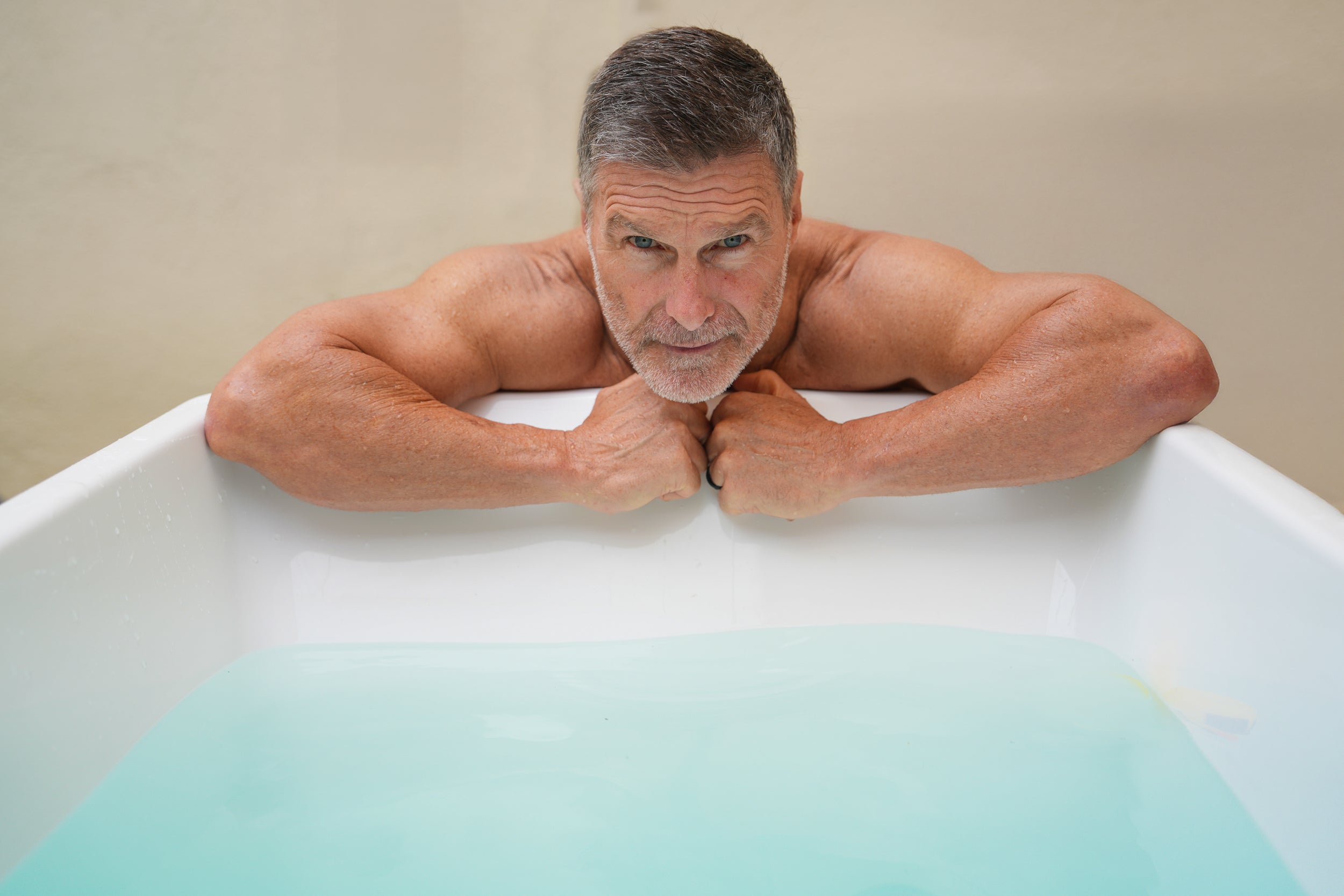
Sauna vs. Hot Tub: Which is Better for Recovery?
If heat therapy is part of your workout regimen, purchasing a hot tub or sauna for sore muscles can greatly enhance your muscle recovery. Both saunas and hot tubs are renowned for their therapeutic effects, as heat therapy alleviates muscle tension, improves circulation, and promotes relaxation. But, which is better? While some people might use a hot tub after a workout, others prefer to sweat in the sauna.
In this article, we’ll delve into the age-old debate of sauna vs. hot tub and explore the unique benefits of each for sore muscles. We’ll also explore how these tools can be integrated into your workout regimen, as well as their safety precautions and common questions.
Sauna vs. Hot Tub: How They Work
Heat therapy is a time-honored practice celebrated for its many benefits, particularly for post-workout recovery and alleviating aching muscles. Applying heat to the body triggers physiological responses that contribute to enhanced circulation, muscle relaxation, and reduced stiffness. As an integral component of recovery regimens, heat therapy serves to accelerate the healing process, making it an indispensable tool for fitness enthusiasts and athletes alike.
While there are many types of saunas today, it is steeped in ancient tradition as a health-promoting and relaxing activity. Saunas typically operate at temperatures ranging from 160 to 200 degrees Fahrenheit. Utilizing various heat sources like electric heaters or wood-burning stoves, saunas raise the temperature inside to make the user sweat. This natural response not only expels toxins from the body but also enhances circulation, promoting the delivery of oxygen and nutrients to fatigued muscles. Saunas provide a cathartic experience, aiding in muscle recovery, reducing inflammation, and offering a sanctuary for relaxation.
In contrast, hot tubs harness the therapeutic power of warm water. Operating at lower temperatures than saunas, typically between 100 to 104 degrees Fahrenheit, hot tubs create a buoyant environment that eases joint stress and soothes tired muscles. Combining heat and water buoyancy enhances blood flow, reducing pressure on joints and facilitating a sense of weightlessness. Beyond the physical benefits, hot tubs provide a tranquil setting conducive to mental relaxation, making them an appealing choice for those seeking a holistic approach to post-workout recovery.
Sauna Health Benefits
Before we delve into the benefits of saunas after workouts, let's explore the science-backed advantages that make this a cornerstone of wellness and recovery. Numerous studies (linked below) support the positive impact of sauna use on both physical and mental well-being, making it an enticing choice for those seeking holistic rejuvenation. Below are some key benefits linked to sauna therapy:
- Enhanced Circulation: Saunas promote blood flow, improving cardiovascular health and aiding in muscle recovery.
- Detoxification: Sweating induced by sauna sessions helps expel toxins and heavy metals from the body, supporting overall health.
- Muscle Relaxation: The dry heat of saunas relaxes muscles, reducing tension and promoting a sense of well-being.
- Improved Respiratory Function: Sauna use may also enhance lung function and respiratory health.
- Stress Reduction: Saunas have been linked to reduced stress levels and improved mental health.
- Skin Purification: The heat and sweating during sauna sessions can contribute to clearer skin and a healthy complexion.
Hot Tub Health Benefits
Hot tub therapy offers a unique approach to post-workout recovery, blending water immersion with therapeutic advantages of heat:
- Joint Pain Relief: The buoyancy of hot tub water reduces pressure on joints, relieving arthritis and other joint-related discomforts.
- Improved Sleep Quality: Hot tub sessions have been associated with better sleep patterns, promoting relaxation and aiding in insomnia management.
- Stress Reduction: Immersion in warm water induces a state of relaxation, alleviating stress and contributing to improved mental well-being.
- Enhanced Flexibility: Regular hot tub use can increase flexibility and range of motion, supporting overall joint health.
- Cardiovascular Health: The combination of warmth and hydrotherapy may positively affect cardiovascular function, supporting heart health.
- Muscle Recovery: Hot tub immersion helps soothe sore muscles, reducing inflammation and facilitating a quicker recovery post-exercise.
Sauna or Hot Tub After Workout: Which is Better?
Post-workout recovery is the crucial phase that bridges the gap between exercise and the body's restoration. It encompasses a range of practices designed to aid in the repair of muscles, reduce inflammation, and enhance overall well-being. This holistic approach to recovery aims to optimize performance and prevent injuries. Techniques like stretching, cold therapy, and heat therapy in the form of saunas and hot tubs play pivotal roles in this recuperative process.
These recovery techniques have a significant impact on athletic success. For example, stretching improves flexibility and reduces the risk of injuries. Cold therapy, often involving ice baths, alleviates muscle soreness and expedites recovery after intense physical activity. Saunas can aid in muscle relaxation, enhance circulation, reduce stress, and contribute to detoxification. Meanwhile, hot tubs and their warm water immersion provide joint pain reduction and other advantages mentioned above.
Saunas and hot tubs both offer unique benefits for post-workout uses, and each has its own place in a workout or wellness program, allowing users to tailor their approach based on preferences and specific fitness goals. Whether you seek the dry heat sanctuary of a sauna or the gentle warmth of a hot tub, both serve as valuable assets in the pursuit of a well-rounded and effective post-exercise recovery routine.
Sauna vs. Hot Tub for Recovery
Saunas are typically known for their ability to help relieve muscle tension, reduce stress, and improve overall circulation. Saunas can be particularly effective in enhancing cardiovascular recovery by increasing blood flow and promoting the release of endorphins, which can help reduce pain and improve mood. Some studies suggest that sauna use may also benefit muscle recovery and flexibility.
On the other hand, hot tubs, also known as whirlpools or jacuzzis, can soothe sore muscles and joints by providing gentle hydrostatic pressure and warmth. This can be especially helpful for individuals with joint issues or arthritis. Hot tubs also promote relaxation and stress reduction, contributing to an overall sense of well-being.
The choice between a sauna and a hot tub for post-workout recovery ultimately depends on individual preferences and needs. If muscle relaxation and improved circulation are the primary goals, saunas may be the preferred option. Conversely, if you seek relief from joint pain and a more gentle, buoyant experience, a hot tub could be more suitable.
Sauna or Hot Tub for Sore Muscles
While saunas can help with muscle soreness, hot tubs are often considered the best choice for relieving sore muscles. This preference stems from several factors that make hot tubs particularly effective in soothing muscle discomfort.
One key reason hot tubs excel in muscle recovery is the combination of warm water and hydrostatic pressure. The heated water in a hot tub helps relax and dilate blood vessels, increasing blood flow to sore and tired muscles. Improved circulation brings essential nutrients and oxygen to these areas while aiding in removing metabolic waste products, which can contribute to muscle soreness.
To delve further into the science behind hot tubs and muscle recovery, it's essential to understand delayed onset muscle soreness (DOMS). DOMS occurs when individuals engage in unaccustomed or intense physical activity, leading to microscopic muscle damage and inflammation. This typically peaks 24 to 48 hours after exercise, resulting in stiffness, pain, and reduced muscle function.
Research suggests that hot water immersion, such as in a hot tub, can mitigate the symptoms of DOMS. Warm water immersion has also been shown to increase oxyhemoglobin levels, leading to improved tissue oxygenation. This increase in blood flow and oxygen delivery can aid in the recovery of fatigued muscles by supplying essential nutrients and removing waste products.
Safety Precautions
Whether your post-workout recovery routine includes a sauna or hot tub, you should be aware of the safety precautions required to operate these devices. While these rejuvenating practices offer numerous benefits, understanding precautionary measures is paramount to ensure a safe and effective recovery experience. Here are key safety precautions to bear in mind before using either system:
- Hydration is Key: Prioritize hydration before, during, and after heat therapy to counteract fluid loss through sweating and maintain overall well-being.
- Limit Session Duration: While the allure of extended sauna or hot tub sessions may be tempting, limiting the duration is crucial to prevent dehydration and overheating.
- Know Your Limits: Individuals with pre-existing health conditions, such as cardiovascular issues, should consult with a healthcare professional to determine suitable limits before engaging in heat therapy.
- Avoid Alcohol and Stimulants: Refrain from consuming alcohol or stimulants before heat therapy sessions, as they can exacerbate dehydration and increase the risk of adverse reactions.
- Cool Down Gradually: After leaving the sauna or hot tub, allow the body to cool down gradually to prevent dizziness or lightheadedness. Engaging in a cool-down routine, such as a gentle stretch, can be beneficial.
Hot Tub vs. Sauna FAQs
How Does a Hot Tub Soothe Sore Muscles?
Hot tubs soothe sore muscles through warm water immersion, buoyancy reduces joint strain, and jets provide a targeted hydrotherapy massage. This combination relaxes muscles, improves circulation, and accelerates recovery.
Can You Use a Sauna After Exercising?
Using a sauna post-exercise aids muscle relaxation, enhances circulation, and promotes detoxification. For a comprehensive exploration of the benefits, visit our detailed blog post on incorporating saunas into your post-workout routine.
Should I Hot Tub Before or After the Sauna?
If you’re using both, start with the sauna before transitioning to the hot tub. The sauna preps muscles by promoting relaxation, and the hot tub soothes further, enhancing the overall recovery experience.
Making the Right Choice for Your Muscle Recovery and Soothing Needs
So, is it better to use a hot tub or sauna for sore muscles? The answer lies in your unique recovery needs. With their dry heat, saunas offer muscle relaxation, enhanced circulation, and detoxification. On the other hand, hot tubs, through warm water immersion and targeted hydrotherapy, excel in alleviating sore muscles, reducing joint strain, and promoting overall relaxation.
Considering the benefits of both, Plunge offers a versatile solution with at-home tubs and saunas. Our products cater to diverse recovery needs, allowing you to customize your routine. Our cold tub, which can also be heated to 103°F, adds an extra dimension to your recovery arsenal. Designed for indoor and outdoor use, our cold tub uses cooling, filtration, and sanitation technologies to provide a clean and refreshing soak for your post-workout needs.
With our at-home sauna, you can sweat it out at up to 230°F and bring friends and family. Our flip-up benches make it easy to make the sauna your own, and their ergonomic design ensures your back is supported while you recover from your workout.
Learn more about how a Plunge tub or sauna fits into your post-workout routine today to begin enjoying the soothing, detoxifying benefits of each.























